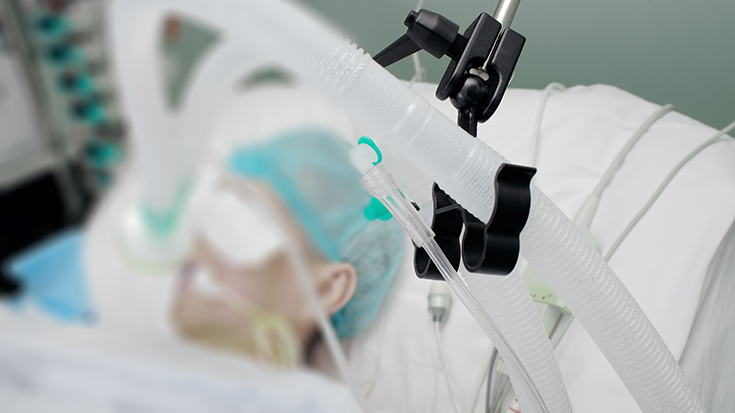
Since the discovery of helium in 1868 and the suggestion of its use in 1934 to improve airflow in patients with airway obstructions, heliox mixtures have been used to treat various respiratory‐related illnesses.1,2 Extracted from natural gas, helium is odorless, tasteless, and non-toxic. In addition, due to its low molecular weight and density, it passes through valves and airways with less turbulence.1 Fortunately, the effects, and therefore the benefits, of heliox occur within an hour after the start of therapy. Therefore, heliox provides an emergency airway solution used as a bridge to reduce airway resistance (Raw) and respiratory muscle work until definitive therapies address etiological factors.3 This editorial reports on the most recent published literature using heliox mixtures in the treatment of children and adults.
Indications
The major benefit of heliox comes from its lower density and improvement in flow dynamics and therefore, is primarily used for treatment of upper airway obstructions (intrinsic and extrinsic), croup, and post-extubation stridor. Heliox has also demonstrated usefulness in obstructive lung diseases, such as asthma and COPD, as a vehicle for better deposition of bronchodilators.2 A list of reported uses can be found in the table below:4,5,6
- Upper airway obstruction
- Laryngeal obstruction
- Subglottic stenosis
- Acute vocal cord dysfunction
- Bilateral vocal cord paralysis
- Croup
- Adjuvant for conscious sedation, awake intubation
- Endotracheal and endobronchial disease
- Mediastinal mass
- Chronic obstructive pulmonary disease (COPD)
- Asthma exacerbation
- Pneumonia
- Severe respiratory failure
- Bronchiolitis
- Improved exercise performance
- Nebulized drug delivery
- Pulmonary rehabilitation
- Pulmonary function testing
- Congenital diaphragmatic hernia (CDH) Acute respiratory distress syndrome (ARDS
Heliox has been associated with a faster improvement of respiratory rate, acidosis, hypercapnia, and encephalopathy. Its use has also shown a shorter duration of mechanical ventilation and ICU stay. These benefits are all possibly due to improved respiratory mechanics. It has also been reported to promote a uniform distribution of bronchodilators in COPD and asthma.2 The value of heliox to treat asthma and COPD in patients on mechanical ventilation due to severe airflow obstruction is unlikely to offer a clinically meaningful benefit. Leatherman et al. (2018) report that although heliox administration resulted in peak airway pressure and PaCO2 reduction, there was no change in indices of hyperinflation (plateau pressure and total PEEP).7
Wise et al. (2018) report success with the use of heliox in managing infants with CDH along with gentle ventilation and permissive hypercapnia in decreasing ventilator support and oxygen exposure.5 Over the course of four years, they reported that heliox along with the standard practice of permissive hypercapnia facilitated improvement in gas exchange evidenced by decrease in ventilator settings. They reported decreases in PaCO2 levels, amplitude, frequency and FiO2 along with increases in pH.
The Cochrane review published by Moraa et al. (2018) reported that the benefit of heliox for the treatment of moderate to severe croup appeared to be no better than one or two doses of nebulized racemic epinephrine (RE). Their findings were based on clinical score, SpO2, RR and HR in 29 infants randomized to either RE or heliox that had similar improvements in clinical scores.8
In one in vitro study, the use of heliox to deliver albuterol aerosol therapy through a small adult high flow nasal cannula utilizing a vibrating mesh nebulizer did little to improve the inhaled dose.9 However, the inhaled dose trended higher with heliox than with oxygen at flows meeting patient inspiratory demands during distressed breathing patterns.
Application
The most common heliox concentration is an 80:20 blend (79% helium: 21% oxygen). A heliox flowmeter should be utilized for delivery if available. If delivered through an oxygen flow meter, the clinician will need to multiply the flow indicated by 1.8 to determine the total flow to the patient. To determine how long an H or K tank of heliox will last, the therapist will use the cylinder factor 2.5.10 The formula would be:
Duration of flow (min) = Pressure (psig) X Cylinder Factor / Flow (L/min)
Heliox can be administered via nasal cannula (NC), high flow nasal cannula (HFNC), non‐rebreathing mask (NRB), aerosol nebulizer, and both invasive and non-invasive mechanical ventilation. The clinician should make the patient and family aware that the patient’s speech will sound squeaky once heliox begins due to helium’s greater sound wave speed but will revert to normal once removed. Do not use single-limb circuit devices with passive exhalation (e.g., V60, Trilogy home ventilator) due to the higher flows required, inconsistency in a delivered fraction of inspired helium (FiHe), and the high cost of delivery. Use oxygen blends at 0.40 FiO2 or less to achieve the full benefit of the helium. We use two standard orders for heliox at our facility, 60:40 or 70:30 depending on the patient’s oxygen requirement. A helium analyzer is used for monitoring gas delivery if available. An oxygen analyzer can be utilized to monitor, but should be recalibrated to air and oxygen routinely.
Several models of ventilators have heliox capability. These devices deliver and measure heliox blends accurately. It can be adapted to any ventilator by connecting the high-pressure air hose to the heliox tank. During heliox ventilation, lower driving pressures are necessary to distribute oxygen to distal alveoli for improved oxygenation and increased carbon dioxide diffusing capacity.6 Heliox delivery through mechanical ventilators requires close monitoring and knowledge about its interaction with each specific ventilator. Do not use in volume-ventilation modes at tidal volumes (VT) < 40 mL. Helium has a significant effect on fraction of inspired oxygen (FiO2) delivery, displayed inspiratory VT, pressures, and delivered VT during both volume and pressure-controlled ventilation.4 If available, use of a helium mode on the ventilator is recommended.
Future
Is there a role for Heliox therapy in COVID‐19? Wang et al. (2021) reported on a case of heliox use administered through high flow nasal cannula in severe ARDS caused by COVID‐19. The infant responded immediately and significantly as evidenced by improvements in respiratory rate, retractions, nasal flaring and increase in SpO2. The patient weaned off heliox after three days, avoided reintubation, and was discharged home 17 days later.3,11
Kleiman and Huffmyer (2018) present other physiologic effects of heliox warranting further study. It has synergistic effects with nitric oxide, resulting in decreased pulmonary artery pressure; it has shown cardioprotective properties, neuroprotective properties, use as an alternative to carbon dioxide for insufflation during procedures, and optimizing imaging during MRI.2
Although heliox has been in use for almost nine decades, many reports are observational in nature. As a bridge to definitive treatment, it is vital for today’s respiratory therapist to remain knowledgeable about heliox and the different ways it can be adapted quickly for use in patients with moderate to severe airway obstruction. Research that is more robust is necessary to study delivery methods and outcomes for specific patient populations.
References
- Hess, D. R., Fink, J. B., Venkataraman, S. T., Kim, I. K., Mters, T. R., & Tano, B. D. (2006). The history and physics of heliox. Respiratory Care, 51(6), 608–612.
- Kleiman, A. M., & Huffmyer, J. L. (2018). Helium: Is the Sky the Limit? Respiratory Care, 63(4), 488–490.
- Wang, T., Xiang, Q., & Bian, J. (2021). Promising gas therapies for severe COVID-19. Journal of Intensive Medicine, 1–4.
- Hashemian, S. M., & Fallahian, F. (2014). The use of heliox in critical care. International Journal of Critical Illness & Injury Science, 4(2), 138–142.
- Wise, A. C., Boutin, M. A., Knodel, E. M., Proudfoot, J. A., Lane, B. P., Evans, M. L., Suttner, D. M., & Kimball, A. L. (2018). Heliox adjunct therapy for neonates with congenital diaphragmatic hernia. Respiratory Care, 63(9), 1147–1153.
- Beurskens, C. J., Wösten-van Asperen, R. M., Preckel, B., & Juffermans, N. P. (2015). The Potential of Heliox as a Therapy for Acute Respiratory Distress Syndrome in Adults and Children: A Descriptive Review. Respiration, 89(2), 166–174.
- Leatherman, J. W., Romero, R. S., & Shapiro, R. S. (2018). Lack of benefit of heliox during mechanical ventilation of subjects with severe air-flow obstruction. Respiratory Care, 63(4), 375–379.
- Moraa, I., Sturman, N., McGuire, T. M., & van Driel, M. L. (2018). Heliox for croup in children. Cochrane Database of Systematic Reviews, 10, 1–38.
- Dailey, P. A., Harwood, R., Walsh, K., Fink, J. B., Thayer, T., Gagnon, G., & Ari, A. (2017). Aerosol delivery through adult high flow nasal cannula with heliox and oxygen. Respiratory Care, 62(9), 1186–1192.
- Kacmarek, R. M., Stoller, J. K., & Heuer, A. J. (2020). Egan’s Fundamentals of Respiratory Care (12th ed.). Mosby.
- Morgan, S. E., Vukin, K., Mosakowski, S., Solano, P., Stanton, L., Lester, L., et al. (2014). Use of heliox delivered via high-flow nasal cannula to treat an infant with coronavirus-related respiratory infection and severe acute air-flow obstruction. Respiratory Care, 59(11), 166-170.
Email newsroom@aarc.org with questions or comments, we’d love to hear from you.
















